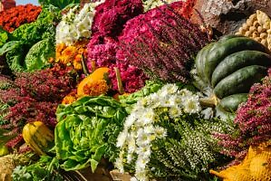
Alas! The hot, muggy, dog days of summer are slowly coming to an end. And what better way to celebrate the end of summer than by welcoming Autumn? It’s time to rip out the old and bring in the new! Fall flower gardens are lovely, especially after the summer cleanup. Let’s begin recreating your outdoor oasis and transform it into a fabulous, fall haven.
(Some of the links within this post are affiliate links on which I receive a small compensation from the sale of certain items.)
Just a Little About the Lawn
If you have a lawn, here are just a few tips on how to prepare it for the winter.
- Rake leaves onto a tarp and then transport them to the curb or a compost bin
- Use leaves as fertilizer by running your mower over fallen leaves in order to shred them into tiny flakes. They will settle into the grass and decompose into a natural fertilizer. However, only do this at the end of the season when most of the leaves have been hauled away. Spreading too many pieces of leaves will suffocate the grass.
- If you’re not fertilizing naturally with leaves, apply a store bought fall fertilizer and pellitized lime if needed.
- You can also aerate your lawn and add extra seed before winter sets in.
For more inclusive information, refer to This Old House, How to Prep Your Lawn For Winter.

Summer Cleanup – Late August, Early September
Before planting any fall foliage, you have to clean up the summer garden.
Update Seasonal Flowers
Now is the time to pull out straggly annuals. If they are still in bloom and look hardy, just clip back the long legged stems to freshen their appearance. You want to clip them back if they are still flowering in order to promote more summer flowers before the temperatures drop.
Also, if you deadhead the flowers before they turn to seed, more flowers may continue to grow and blossom.
Perennials
You do not want to cut back the perennials too soon in the fall season. As with annuals, keep deadheading them before they turn to seed. Once the last flowers have bloomed you can either cut the entire plant to around 4 inches high, or let the last flowers turn to seed to feed the birds.

You can cut the plant back once it is entirely browned out and before the first snowfall. This will allow it to sleep peacefully through the winter and encourage good growth in the spring.
Or, you can leave the plant as is until early spring cleanup. This will attract birds to your garden throughout the winter.
Now is also a good time to divide your perennials.
Prune and Tidy Up
Throughout the summer, bushes, trees and plants become overgrown. Cut off all broken or diseased tree limbs and any limbs hanging too far down that are obstructing views. Make the cut either at the trunk or at a V where two limbs join. Also, cut any dead or diseased wood inside bushes. This will help with air circulation and to prevent disease, mold, and mildew from forming. It will also open up your area. You’ll feel like you just opened a window to a new expanse of scenery.
Pick up any broken branches and debris in the garden and on your lawn.
Protection for Plants
Between the middle and the end of fall, protect cold sensitive plants by adding mulch to the soil, but not too close to the trunk of a tree or bush. Also, wrap them in burlap to protect them from harsh winds and freezing temps.
I recently bought a gardenia plant and love it. I live in a 6a to 7a zone and am going to try to keep it alive this winter by covering it with burlap or a fiber blanket. Wish me luck! Here is a video on how to protect your cold sensitive plants.
Annuals to Add to Your Fall Garden
Now that you have tidied up your garden, it’s time to plant some magic. Fall annuals add a variety of textures, color, and interest to a garden. Though they only live for the season, it is well worth the effort to plant these lovelies in your outdoor sanctuary.
Plant them where there are blank spaces. Before planting, check out the surrounding colors and textures of the foliage. You want to choose a color and texture that will complement the other plants. Also, consider the height of the surrounding plants. It’s best to match the height of others if the gap is next to the existing plants, or choose flowers that are shorter if the gap is in front of them. Create a tier effect so that all is seen.
Fall annuals like cooler temperatures. Begin planting them when the temperatures dip at night. This will help them look and stay fresh through the heat of the day.
Most fall annuals will continue to bloom until the first hard frost. Here are some annuals to select.
Viola – like its cousin, the pansy, viola likes cooler temps; it will flower well into the fall and mid winter; the variety ice pansies will bloom even with a dusting of snow
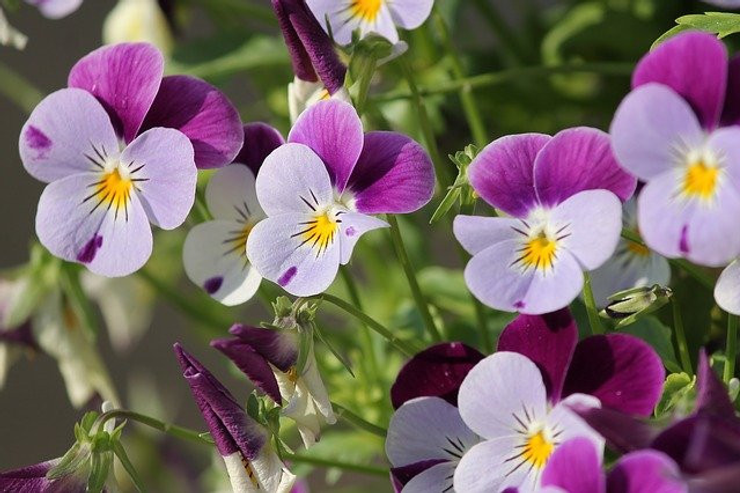
Ornamental Pepper– this pepper comes in a variety of fall colors; you can eat them, however, some varieties are very hot, others very bland
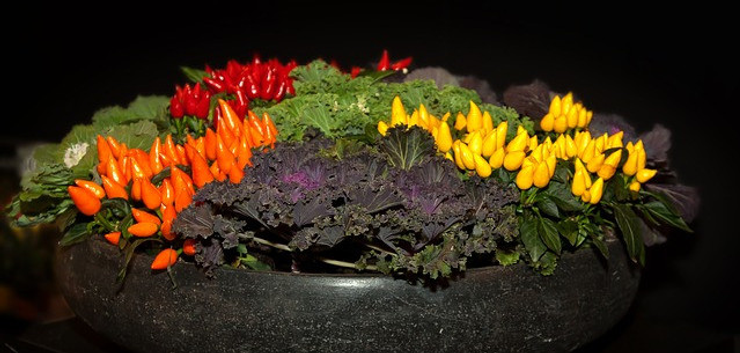
Ornamental Cabbage – the ornamental variety is bred for looks rather than flavor; they like full sun and come in various colors; they look best planted as a grouping; they thrive in cool weather
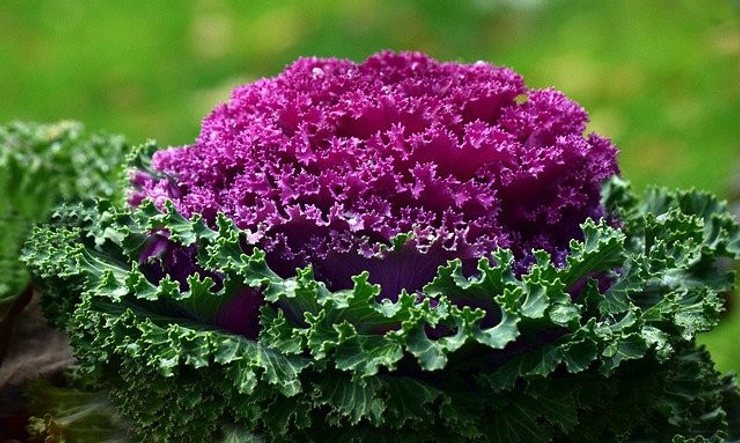
Celosia – spikes of feather like flowers; are drought tolerant; flower from mid-summer through mid-autumn
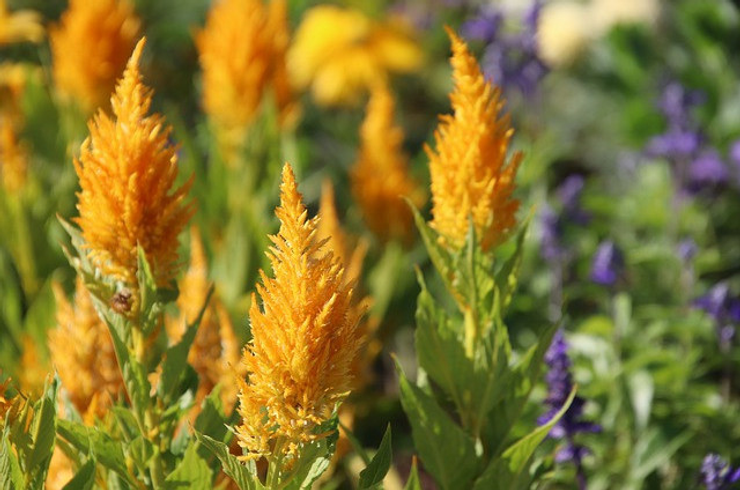
Cockscomb – an annual in cold climates, but a perennial in warmer climates; also known as brain flower because of its appearance; it is a different variety of the celosia; grows in a variety of colors
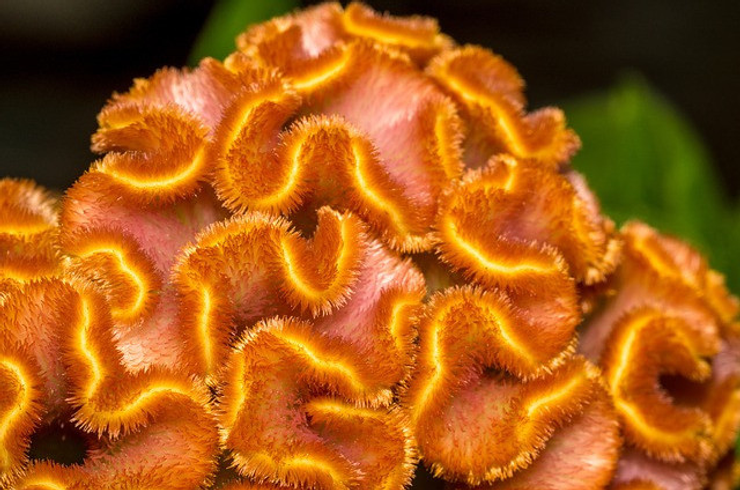
Marigold – grows from summer through fall; primarily orange or yellow varieties with varying sizes; good all around flower
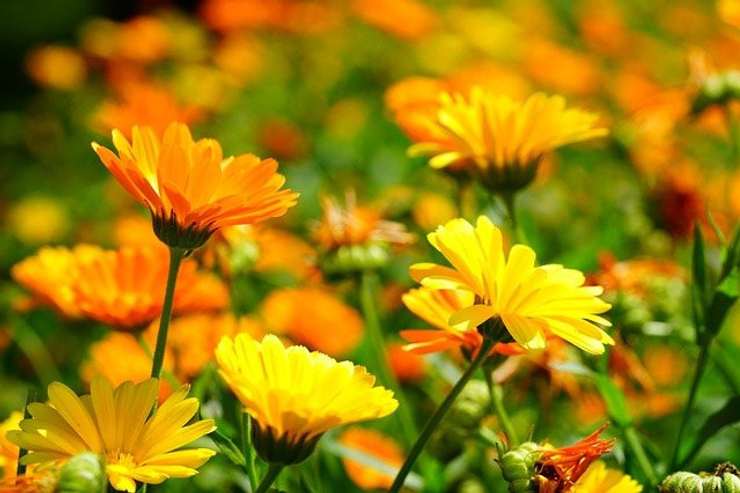
Zinnia – blooms from summer through fall; comes in many colors and sizes; great cutting flower; good all around flower
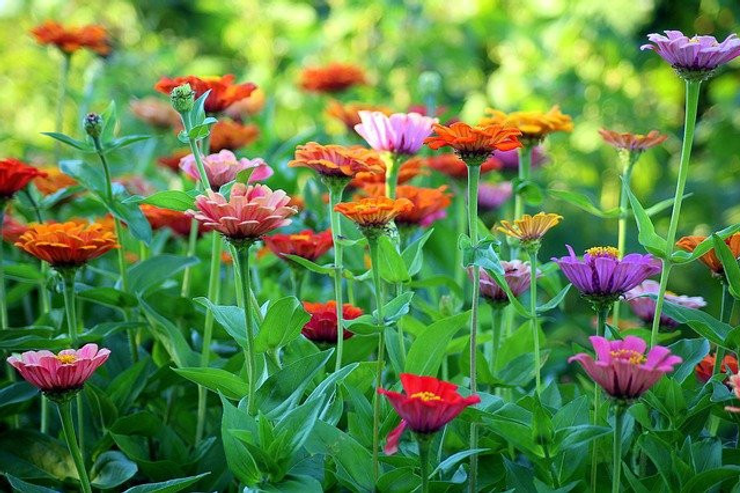
Perennials to Add to Your Fall Garden
When the temperatures drop and stay consistently cool, plant spring and summer bulbs. For more information on planting bulbs, namely tulips, check out my blog post Everything About Tulips.
There are many other perennials that bloom in the fall. Here are just a few.
Sedum – (otherwise known as Autumn Joy) interesting flower that changes from a pale green to a crimson red; use as cutting flowers; attracts bees and butterflies
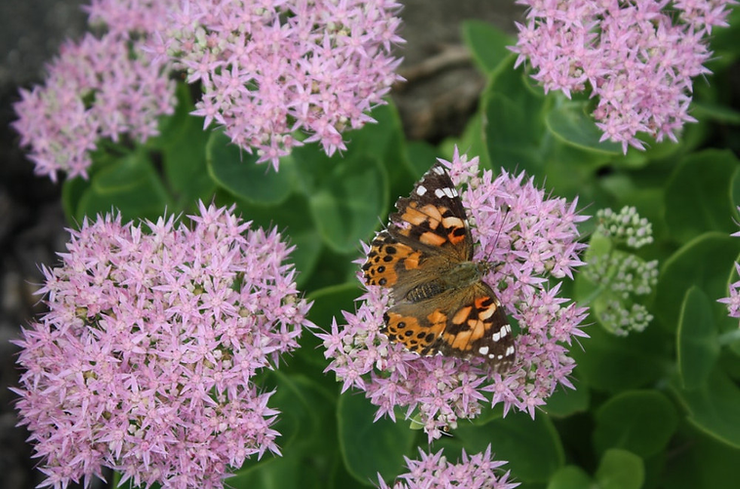
Rudbeckia – one common rudbeckia is black-eyed-Susan; it is a very hardy plant and grows naturally in the mid-western sections of the US; they are commonly seen in fields; extremely easy to grow and maintenance free except for deadheading
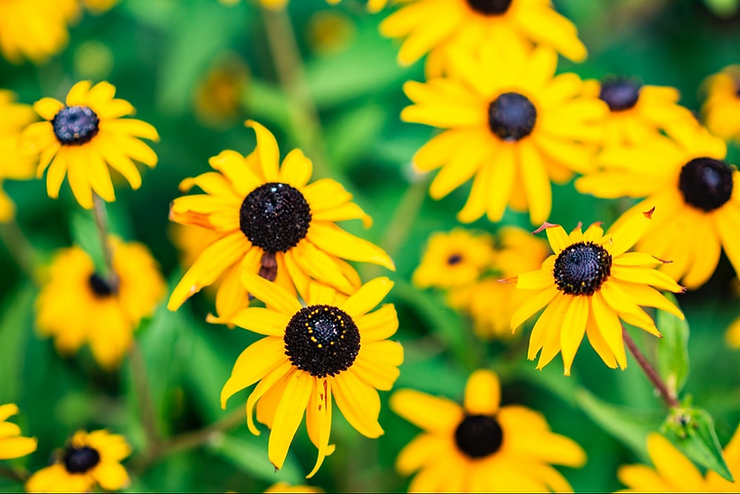
Perennial Sunflower – the Maximillian Perennial Sunflower will bloom from mid summer through fall; can grow up to 7 feet high; good for the back of your garden; attracts pollinators
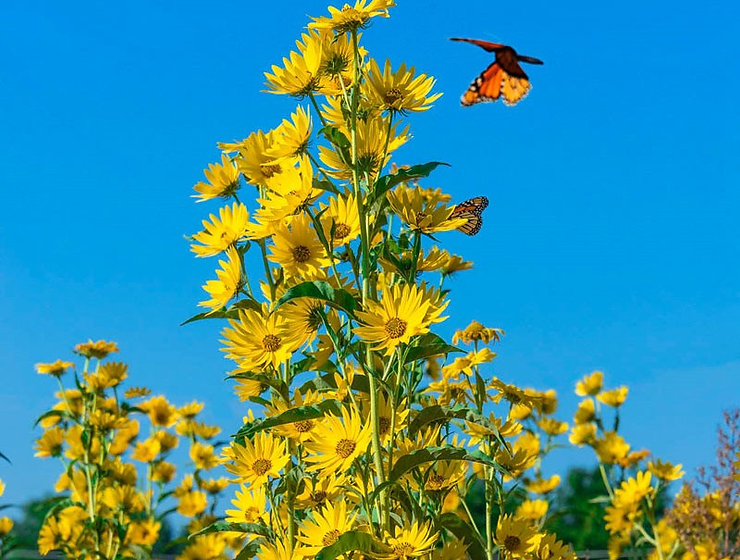
Salvia – plant in full sun; loves the heat; butterfly magnets; blooms summer through fall
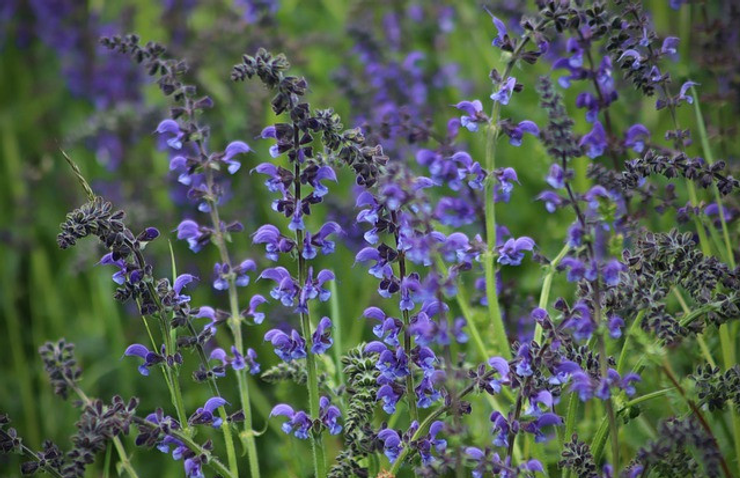
Coreopsis – blooms summer through fall; perennial variety will bloom second year after planting; likes full sun
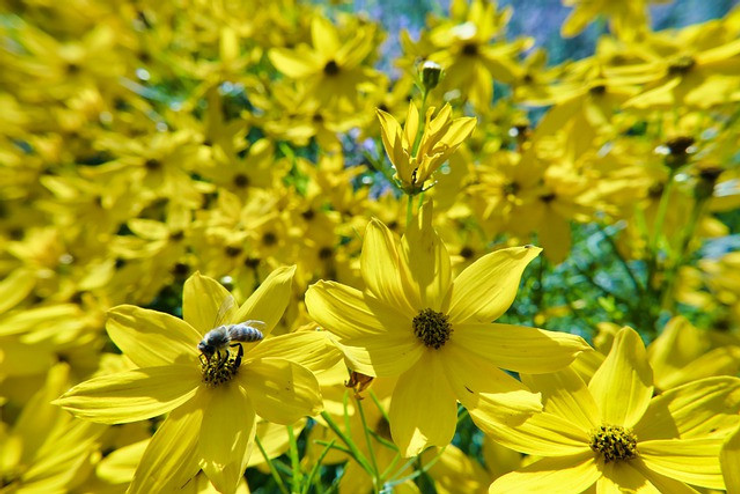
Chrysanthemums – these flowers are either annuals or perennials. If you are buying mums with the intention of planting them in the ground, buy them from a nursery. The supermarket brands are not meant to be perennials. After they have bloomed, plant them in the ground and cut back the stems. Once they start to pop up in the spring and summer, trim the height of the stems to 8 inches until July 15 to guarantee flowers in the fall.
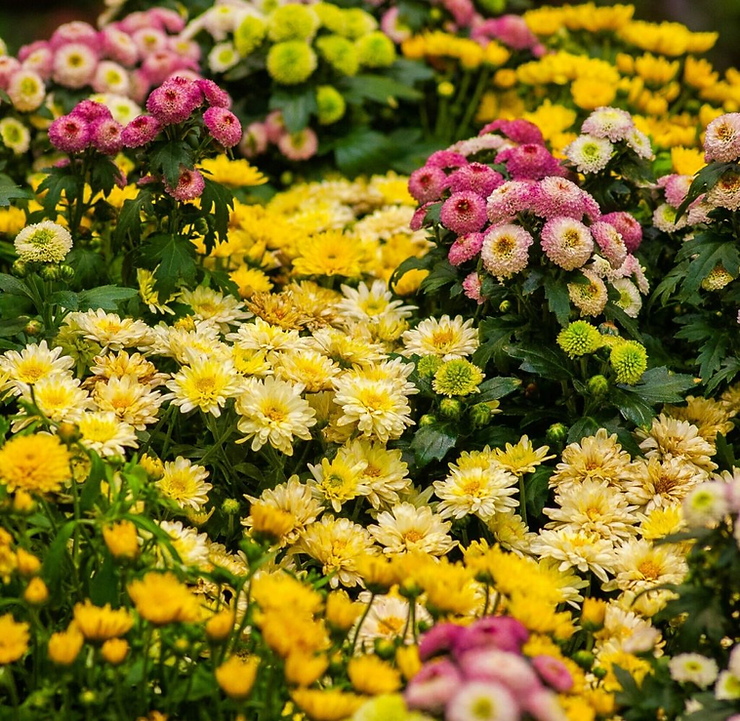
An Easy Guide
Follow the guide below to almost guarantee a beautiful fall garden.
Early to Mid-Spring Divide perennials and complete plant divisions
Summer Plant heat tolerant and perennial flowers on or before last frost date
Early Fall Plant cold tolerant annuals and perennial flowers
Mid-Fall Plant bulbs
During the hot season, be sure the roots are covered with 2 to 3 inches of natural mulch (not black) to keep the roots moist. Water 2 to 3 times per week.
After the summer’s heat and the plants are not producing any more flowers, water the plants once per week.
An Easy Guide
Follow the guide below to almost guarantee a beautiful fall garden.
Early to Mid-Spring Divide perennials and complete plant divisions
Summer Plant heat tolerant and perennial flowers on or before last frost date
Early Fall Plant cold tolerant annuals and perennial flowers
Mid-Fall Plant bulbs
During the hot season, be sure the roots are covered with 2 to 3 inches of natural mulch (not black) to keep the roots moist. Water 2 to 3 times per week.
After the summer’s heat and the plants are not producing any more flowers, water the plants once per week.
The Beauty of Fall
Autumn is probably my favorite time of year. It welcomes shorter days, cozier nights, the wafting aroma of a wood burning fire, and brilliant crimson gardens. I hope after reading this post you’ll decide to spruce up your garden and create a beautiful fall oasis.
Please leave a comment below. I love seeing images of gardens. If you’d like, leave a picture of your before and after garden, or just an after shot!
Happy Gardening,
Nina
bestgardeningforbeginners@gmail.com
